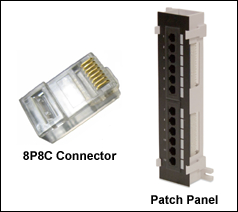Residential Network Cable Installation Site Survey
Posted sometime prior to .

The structural differences between residential premises are very significant when challenged with installing cabling, particularly when trying to maintain the aesthetic integrity of the home. Producing an accurate (useful) estimate requires some familiarity with the premises. The installer needs to identify the hurdles presented by the structure; client requirements, and develop a plan to reconcile the two. This process begins with a site survey (visit).
The primary goal of a site survey is to identify the most desirable (efficient, cost effective) cable paths. Typically, these will maintain the longest shared path(s) for cables routed to different service locations. Attic access is desirable and investigated, for the horizontal distribution of cabling that is to be dropped down through the top plates of bedroom, and / or home office walls on the upper floor. Differences between finished, semi‑finished, and roughed‑in basements may influence the cable routing and termination options presented, or pursued. Termination of your cabling on a patch panel is recommended, but optional (Fig. 1). A suitable location for the patch panel (if pursued) is identified, as are service locations for your outlets, and Wireless Access Points (if within the scope of the project). A laser level may be used during the investigation, to identify wall offsets, from one floor to another.
Material requirements are identified, aiding the production of an estimate.
It is not uncommon for the cabling plan to develop further, following the survey. The best ideas, don't always come first, and reflection is often beneficial. The typical site survey requires about an hour of investigation. In addition to addressing the technical requirements of the project, it provides an opportunity for the two parties to establish trust, and rapport.
last modified: 2025.09.02, 17:11 -0400
endeavor-networks.com/mobile/articles/residential-network-cable-installation-site-survey.shtml
© 1999 – 2025 All rights reserved by the Domain Registrant.